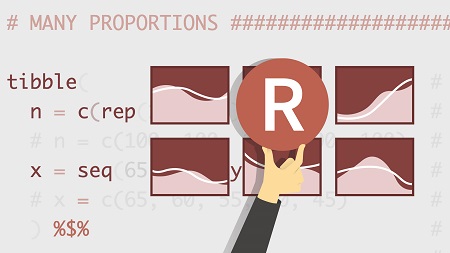
English | MP4 | AVC 1280×720 | AAC 48KHz 2ch | 3h 59m | 662 MB
Trying to locate meaning and direction in big data is difficult. R can help you find your way. R is a statistical programming language to analyze and visualize the relationships between large amounts of data. It’s one of the most important tools available for data analysis, machine learning, and data science. This training series provides a thorough introduction to R, with detailed instruction for working with R and RStudio and hands-on examples, from exploratory graphics to neural networks. In part two, Modeling Data, instructor Barton Poulson shows how to compute statistics, analyze data, predict outcomes, and group and classify cases. These are the fundamental techniques you need to generate meaningful insights for your organization.
Topics include:
- Computing frequencies and correlations
- Computing descriptive statistics
- Conducting an item analysis
- Comparing proportions
- Comparing paired means
- Comparing multiple means
- Predicting outcomes with linear and logistic regression
- Grouping cases with k-means clustering
- Classifying cases with k-nearest neighbors
- Creating ensemble models
Table of Contents
1 Model data with R
2 Using the exercise files
3 Data science with R A case study
4 Computing frequencies
5 Computing descriptive statistics
6 Computing correlations
7 Creating contingency tables
8 Conducting a principal component analysis
9 Conducting an item analysis
10 Conducting a confirmatory factor analysis
11 Comparing proportions
12 Comparing one mean to a population One-sample t-test
13 Comparing paired means Paired samples t-test
14 Comparing two means Independent samples t-test
15 Comparing multiple means One-factor analysis of variance
16 Comparing means with multiple categorical predictors Factorial analysis of variance
17 Predicting outcomes with linear regression
18 Predicting outcomes with lasso regression
19 Predicting outcomes with quantile regression
20 Predicting outcomes with logistic regression
21 Predicting outcomes with Poisson or log-linear regression
22 Assessing predictions with blocked-entry models
23 Grouping cases with hierarchical clustering
24 Grouping cases with k-means clustering
25 Classifying cases with k-nearest neighbors
26 Classifying cases with decision tree analysis
27 Creating ensemble models with random forest classification
28 Next steps
Resolve the captcha to access the links!